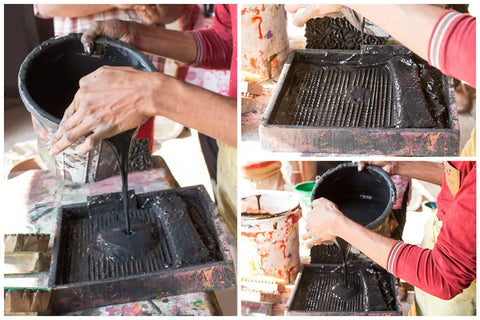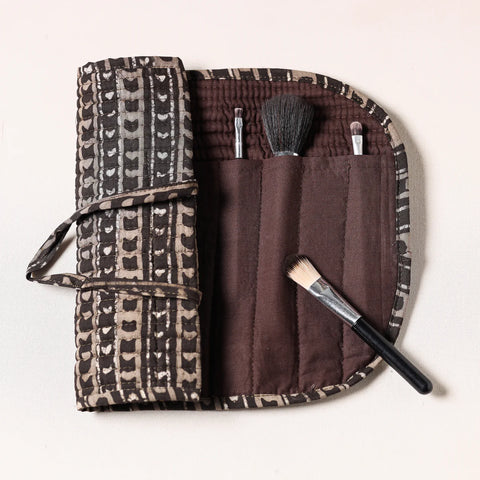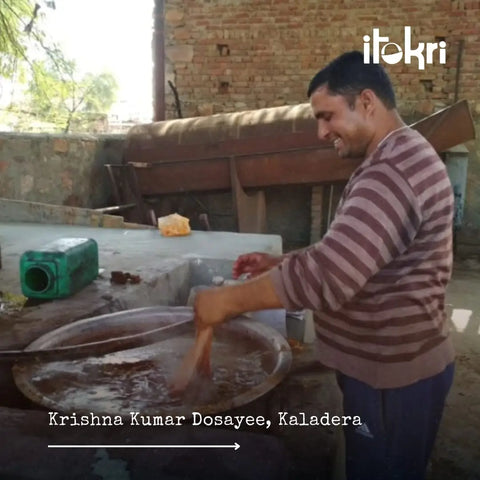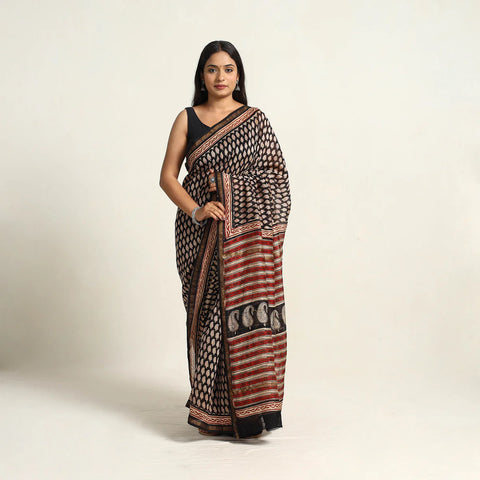From traditional motifs to contemporary styles, Bagru prints are leaving their mark on everything from dresses to home decor. Read on to know how this timeless art is shaping today’s fashion trends
The art of Bagru block printing has also entered the kitty of designers and captured consumers' imagination and how! Dating back hundreds of years, block printing, as an art and craft, still carries a rich cultural essence and an aura of intricate handwork, not only as an ode to India's historical heritage but also as a testament to the modernity of this ancient art form.
What is Bagru Print?
Bagru print is a traditional block printing technique from Bagru, Rajasthan, known for its intricate patterns and natural dyes. Artisans use hand-carved wooden blocks to stamp designs on fabric, typically featuring earthy tones and motifs inspired by nature. This eco-friendly process has been passed down for generations, blending cultural heritage with sustainable craftsmanship.

Image credit:- D'source
Historical Context: The Beginning of Bagru Printing
Bagru Block Printing is a craft developed over three centuries ago in the small village of Bagru on the periphery of Jaipur in Rajasthan, India. This Chhipa community of craftsmen specialises in doing bag prints. Generations passed down knowledge to members of the community regarding the art of bagru hand block printing–– an important part of culture in Rajasthan.
It is the art of stamping the fabrics with intricately carved designs into beautiful wooden blocks, for getting highly detailed and symmetrical patterns. Traditionally, bagru dabu print is focused on floral and geometric motifs inspired by nature, which pretty much spoke for the region's landscape and culture.

Image credit:- D'source
Cultural Significance: History Tied to the Prints
Each print bears a story behind it that is usually tied in with the history and culture of the place. While many of the Bagru prints carry some meaning in Indian culture, some patterns may depict fertility and growth while others may run under the motif of animal symbolism, typically for power and strength or wisdom.
Traditional Techniques of Bagru: An Art Passed Down Through Generations
This is a labour-intensive process that requires immense craftsmanship to produce. It's done entirely by hand, while all other textile production in the modern world is through machines. Every print starts with a wooden block, carved meticulously by master artisans. These are mostly made of a wood called teak or sycamore; the blocks are relatively quite durable and capable of being used repeatedly.
The natural dye is prepared beforehand by soaking the fabric in vegetable extracts or clay or metal salts. The process can run for several days; thus, each colour should sink richly and evenly into the fabric. After the dyeing has been completed, the fabric is laid flat and the artisan dips the block into the dye before pressing it onto the fabric. This is then repeated with all care until the whole fabric length is shrouded by the pattern at its best.
The final stage of such processing is washing and drying the bagru print fabric, which fixes the colours so that they do not fade.
Innovation in Design: Where Tradition Meets Modernity
New fabrics and colours are part of the innovations of Bagru prints. Traditional Bagru prints were basically done on cotton and silk; today designers have experimented with linen, wool, and even synthetic fabrics.
This adaptability has enabled the Bagru prints to transcend traditional ethnic wear to casual and even formal apparel in the style of the West. Largely preferred as a style for dressing up, Bagru prints today can be found on everything from dresses, skirts and blouses to scarves, jackets, and even home décor items.
Ethical Fashion: Bagru's Role in Conscious Consumerism
A good and timely example of this in a sustainable mainstream industry is the craft of Bagru Block Printing. Natural dyes and a hand-printing process make Bagru printing low-impact, less environmentally damaging, and an alternative to numerous mass-produced textiles. Today, many consumers look for fashion that is not only aesthetically pleasing but also aligns with their values of sustainability and ethical production.
Final Note: The Lasting Legacy of Bagru Block Printing
The designers and consumers find deep respect and appreciation for the craft in the rich history, unique patterns, and sustainable practices involved in Bagru prints.
This is a perfect celebration of the beauty of Indian craftsmanship, coupled with the knowledge that we, in turn, give back to a more sustainable and ethical fashion industry. A bagru fabric or a bagru-printed dress or a decoration of one's house with Bagru textiles brings you a piece of history that inspires and influences fashion today.
Our Bagru Best-Selling Products
Black - Bagru Print Chanderi Silk-Cotton Saree with Zari Border
This beautiful Bagru hand-block-printed Chanderi silk-cotton saree reflects Rajasthan’s rich heritage, featuring intricate designs made with natural dyes and traditional techniques. Lightweight and elegant, it effortlessly blends tradition with modern style. Perfect for any occasion, it's a timeless wardrobe addition.
Ajrakh Dabu Bagru Block Print Chanderi Silk Fabric
This Ajrakh Bagru Dabu print fabric, handcrafted in Rajasthan, showcases traditional mud-resist techniques and natural dyes. With a medium fine density and 0% transparency, it is perfect for all clothing purposes. Lightweight yet durable, it adds cultural richness to any creation.
Bagru Fabric Multipurpose Segmented Make-up Brush Wrap Pouch/Case
This handcrafted makeup brush wrap pouch is made from cotton fabrics and foam, featuring handmade Indian textiles. With one large and five small pockets, it’s a stylish and practical storage solution. Lightweight and durable, it’s perfect for organizing essentials. Gentle hand wash recommended.
Shop a range of Bagru fabrics like sarees for women, home decor items, bags, pouche and more at itokri at the best rates and bring home the aesthetic workmanship of Indian artisans, reflecting rich Indian heritage.

 Verified Purchase
Verified Purchase














































































































































































































Leave a comment (all fields required)